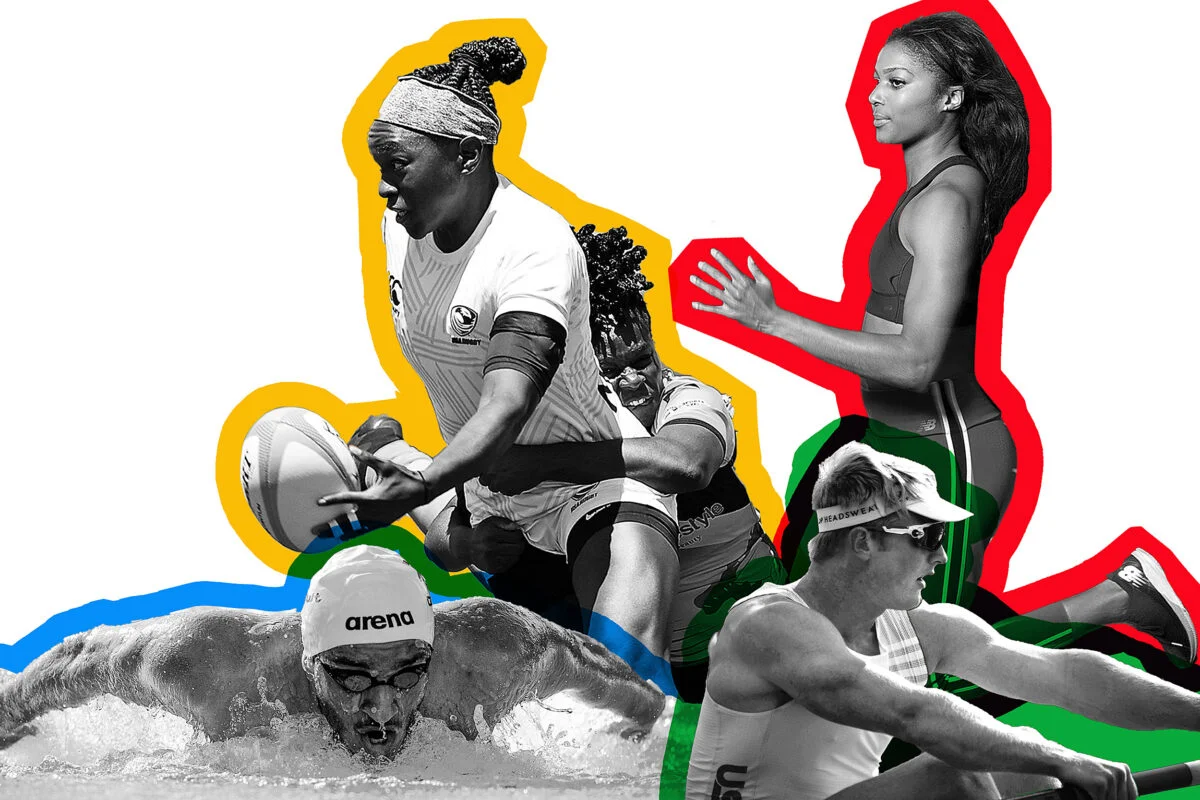The 2022 Olympics are currently in full swing after being postponed owing to the one who shall not be named. Moreover, as an insurance geek team, we at Ancileo noticed that the Olympic sports embodied certain principles that insurers may emulate. So here you have it:
1. Synchronised Diving, the Synchrony for Partnerships
Extreme levels of coordination and synchronisation are required for synchronised diving. What athletes like gold medalists in synchronised diving Tom Daley and Matty Lee demonstrate may also be observed in insurance. Insurance ecosystems are groups of organisations that work together to provide value to customers through strategic collaborations. Finding the perfect partner is the first step in developing an efficient environment. If you are an insurer looking to partner with an insurtech firm, for example, you can keep an eye on the market and develop relationships with potential partners by attending conferences, networking with venture capital investors and tech accelerators, and collaborating with data and insight providers.
Even beyond that, ecosystem alliances necessitate coordination and collaboration to create smooth, fluid journeys for every customer, much as artistic swimmers necessitate for every routine. From assessing what each partner brings to the table and establishing relevant KPIs to managing internal competition by establishing clear goals and creating well-crafted contracts, determining the ecosystem’s exclusivity, and so on. The precise synchronisation necessary between all aspects is similar to that required in sports.
2. Golf, a Learning Opportunity for Regulators

While almost all sports have a set of rules that competitors must observe, golf has a rigid dress code that few other sports have. Professional golfers competing in the Olympics, like as Rory McIlroy and Justin Thomas, must follow a set of arbitrary restrictions imposed by the sport. Golf is full of standards that remind us of the insurance industry’s strict regulations, from wearing a collared polo to tucking in their t-shirts. The industry is expanding while adjusting to client needs through technology innovation, particularly through insurtechs.
At the same time, the industry’s strict restrictions slow the development and adoption of innovative products and services. Yet, items that have been tested in a controlled environment will face fewer legal challenges. If regulators and insurers collaborate, they can stimulate innovation alongside regulatory frameworks that are primarily designed to facilitate insurtech innovation.
3. Using the Athletics Mixed Relay to Create an Omnichannel

To pass the baton from one runner to the next in a relay race, teamwork and coordination are required. The victory of Poland in the mixed relay at the 2020 Tokyo Olympics reminded us of an omnichannel approach to insurance distribution.
An omnichannel approach implies that the user’s journey takes place across multiple channels. The customer may conduct internet research before purchasing the product via a call centre agent, or vice versa. Because of the pandemic, consumers are making the majority of their purchasing decisions online and then picking them up in-store. Developing an effective omnichannel system necessitates a laser-like focus on value creation. But, before companies rush to develop their omnichannel capabilities, they must analyse the fundamental value drivers for their specific business. But, the world of omnichannels can be challenging due to the numerous techniques and technology available, as well as sharp margin pressures and short timescales. These variables can lead to insurers investing in the wrong things and fast spiralling downward, destroying wealth.
4. Skateboarding Your Way into the Minds of Millenials
Indeed, skateboarding has been designated as an Olympic sport. It has been introduced for the first time in the Tokyo 2020 games, with skateboarders such as thirteen-year-old Sky Brown, and appears to be the Olympics’ attempt to get in with the young.
Embedded insurance works on the same concept. Millennials and Generation Z are extremely tech-savvy and prefer simple, quick, and easy insurance solutions. People are discouraged from purchasing insurance since outmoded standard insurance procedures with time-consuming forms and lengthy processing times are cumbersome and costly, and the advantages appear implausible. In contrast, embedding insurance at the point of sale enables flexibility, convenience, and personalisation. Embedded insurance provides customers with inexpensive and personalised coverage right when and where they need it.
5. Triathlon, the Blueprint for Insurance M&A
A triathlon is an endurance sport that combines swimming, road cycling, and running into a single spectacular event. Norway won gold in the men’s triathlon and Bermuda won gold in the women’s triathlon at the Tokyo Olympics 2020.
This reminded us of the regular M&A activity in the insurance industry. In truth, insurers use mergers and acquisitions to focus on and grow their core business. Insurers can streamline their companies by selling off non-core services using a method known as divesting (eg. Aviva selling its SG business). Over the last five years, divestitures accounted for 70% of insurance deals worth more than $1 billion. Divesting simplifies and simplifies the selling of an entity. This benefits purchasers since acquiring more of the same provides operating cost synergies. Yet, M&A cannot guarantee an insurer’s growth. Investments and partnerships are preferred over mergers because they allow companies to test the waters for new capabilities and enter new markets.
6. Utilising BMX Biking to Integrate Tech Seamlessly

BMX bicycling is one of the rare sports where the equipment necessary for the event is as significant as the athlete, with Australia and the United Kingdom earning gold in the men’s and women’s categories, respectively, at the Tokyo Olympics 2020 games.
The bike’s gears, wheels, wheel alignment, seat, and so on must be flawless. The same is true now for insurance. The equipment, technology, and data are just as, if not more, vital than the insurer or underwriter. Technology has long-term implications for every stage of the insurance value chain. The majority of the insurance sector will be automated by 2025, thanks to AI and machine learning. Manual operations such as claims processing, underwriting, policy administration, and customer service will be eliminated. By collecting data from documents, recognising fraudulent claims, and confirming claims, AI can be used to automate claims processing. Technology can also help insurers detect claim fraud, estimate risk, and create smart contracts. As a result, insurers can overtake competitors and be the first to reach the finish line by constantly improving their ‘bikes’.
7. (High) Jumping into a Win-Win
Qatar and Italy earned gold in the men’s high jump after an exciting and dramatic final. We’ve all heard that “competing with” is preferable to “competing against.” The players demonstrated to spectators worldwide how to quickly create a win-win situation for all parties concerned. This is especially beneficial for insurers seeking to attain customer focus, which is a true win-win situation for any firm and its clients. Nevertheless, with continuously changing consumer expectations and behaviours as a result of changing demographics, technologies, and rivals, how can insurers maintain this customer focus? Building a win-win situation begins with anticipating what new and present clients are doing or thinking and then tailoring your own methods to fit their needs.
8. Test of Speed: The 100 Metre Sprint
The 100-meter sprint determines who the fastest person in the world is, alongside Usain Bolt and Yohan Blake. It is a highly thrilling and competitive event that focuses on one specific value: execution speed. While meeting deadlines and working quickly are key qualities for any line of work, insurers can benefit especially from this as innovation in the insurtech field provides insurers with unprecedented speed. This is because AI and machine learning technologies have arrived. Almost no function in insurance will be unaffected by the rise of artificial intelligence and machine learning. Aside from automating standard operations, AI will open up new avenues for insurers to optimise the insurance value chain.
9. Swimming, a Show of Camaraderie
Swimming, like all Olympic sports, is extremely competitive. The competition, however, loses its edge due to the athletes’ camaraderie. The United States swim team has won the majority of medals, but one thing stands out at each meet. Athletes congratulate and hug the champions regardless of whether they win or lose. The insurance sector can learn from the sportsmanship displayed. Insurers face fierce competition from banks, asset and wealth managers, merchants, and new players eager to capitalise on client trust to enter this lucrative sector. It would be more profitable for insurers to form relationships with them, fostering friendship among insurance business players.
10. Throw A Punch to Challenges
Boxing’s fundamental premise is to hit and avoid being hit. Boxers like Shakhobidin Zoirov may educate us not to back down in the face of adversity, but to meet it head on. Insurers have already implemented this advise effectively by shifting to physical separation and other quarantine procedures. The sector soon shifted to digital distribution, hastening the digital transformation. Insurers must now concentrate on the next set of issues, such as reimagining distribution in a more remote environment.
Learning from the Olympians
Olympians, or athletes in general, can teach insurers principles such as commitment, teamwork, and collaboration, which can be used to partnerships, technological integrations, and any new projects. No point is achieved in isolation in hockey or volleyball, and every player must work together to achieve the team’s aim. These were the only parallels that the Ancileo team could find between the current Olympics and insurance. Did you come across another that we hadn’t considered?











